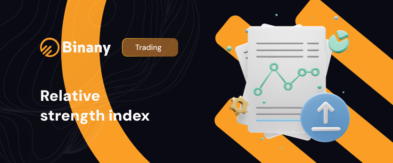Swing Trading
Swing trading is a popular method of trading, typically deployed by those wishing to profit from the price oscillations of financial securities over a short-to-medium-term timeframe. This method operates on the principle of profiting from the ‘swing’ or ‘arc’ a security’s price might follow as market conditions fluctuate.

The duration of a swing trader’s holding period for any particular security is a defining characteristic of the method, usually spanning anywhere from overnight to several weeks. This is significantly longer than the holding period seen with day trading, but shorter than those typical in long-term investment strategies. The goal, as with most trading strategies, is to profit from the volatility in the market.
Concepts of “Swing” in Swing Trading
‘Swing’ is a term indicative of the price movements a security undergoes. These movements might be influenced by factors such as market news, important economic announcements, changes in investor sentiment, and more. Swing traders strive to benefit from these swings, selling during an upswing when prices are high and buying during a downswing when prices are lower.
What Tactics are Used in Swing Trading?
Swing trading tactics are multi-faceted and grounded in technical analysis, which dissects price trends and patterns to determine potential trading opportunities.
Candlestick Patterns: Swing traders rely heavily on candlestick patterns – visual representations of price changes within a specific period. These patterns can be a single candlestick or a group of them, and they offer insights into market sentiment. Some commonly used patterns in swing trading include:
- The ‘Doji’ is a pattern signaling a possible trend reversal, identified when the opening and closing
prices are almost equal. - The ‘Hammer,’ indicating a bullish reversal when it appears during a downtrend.
- The ‘Engulfing’ pattern, which can be bullish or bearish, suggesting a potential reversal.
Chart Patterns: These are certain shapes formed on price charts that can indicate future price movements. Recognized chart patterns include:
- The ‘Head and Shoulders’ pattern, often signaling a bearish reversal.
- ‘Double Tops and Bottoms,’ indicating potential bullish or bearish reversals.
- ‘Triangles’ and ‘Flags,’ suggesting a continuation of the current trend.
Technical Indicators: Technical indicators provide additional validation for the signals generated from candlestick and chart patterns. Swing traders often utilize:
- Moving Averages to identify trend direction.
- The Relative Strength Index (RSI) to determine overbought or oversold conditions.
- The Moving Average Convergence Divergence (MACD) to identify potential buy and sell signals.
Examples of Swing Trading
Consider a swing trader who has been closely monitoring the stock of Company X, which has been fluctuating between $20 and $30 over the past month. The trader notices a pattern – whenever the price drops to approximately $20, it tends to bounce back, and whenever it reaches $30, it tends to fall.
Differences Between Swing Trading and Day Trading
Swing trading and day trading share a common goal – to profit from short-term price movements. However, they differ in several ways:
- Duration: Swing traders typically hold positions for days or weeks, whereas day traders always close their positions within a single trading day.
- Frequency of Trades: Day traders often make numerous trades daily, while swing traders make fewer trades over a more extended period.
- Analysis: Swing trading uses a combination of technical and fundamental analysis. Day trading, on the other hand, relies almost exclusively on technical analysis.
- Stress Level: Day trading often involves high stress due to the constant need to monitor price movements throughout the trading day. Swing trading, with its longer timeframes, usually involves less stress.
Main Types of Securities for Swing Trading
Swing trading can be applied to a wide array of tradable financial instruments. However, certain securities are more favored due to their volatility and liquidity:
- Large-Cap Stocks: These are shares of companies with large market capitalization, usually billions of dollars. Large-cap stocks are typically more stable and have more liquidity, meaning they can be bought and sold in large quantities without significantly impacting the price. This stability and liquidity make large-cap stocks suitable for swing trading.
- Forex Markets: The foreign exchange market is the world’s largest financial market, with trillions of dollars in daily trading volume. Forex markets are extremely liquid and operate 24 hours a day, five days a week, providing numerous trading opportunities. The currency pairs’ price fluctuations are often influenced by economic indicators and policy announcements, creating the price volatility needed for swing trading.
- Exchange-Traded Funds (ETFs): ETFs are investment funds traded on stock exchanges, much like individual stocks. They aim to track the performance of specific indexes, sectors, commodities, or bonds, offering a way to gain broad market exposure. Their price changes throughout the trading day as they are bought and sold, making them suitable for swing trading.
- Options: Options are financial derivatives that give buyers the right, but not the obligation, to buy or sell an underlying asset at a predetermined price before a specific date. The price of an options contract swings based on the price of the underlying asset, making it another popular instrument for swing trading.
Advantages and Disadvantages of Swing Trading
Like every trading strategy, swing trading comes with its unique set of pros and cons.
| Advantages | Disadvantages |
| It’s suitable for individuals who can’t monitor the markets full time. | It requires a thorough understanding of technical analysis. |
| It offers the potential for significant profits over the short-to-medium term. | Holding positions overnight could lead to exposure to sudden market changes. |
| It usually involves less stress than day trading due to longer holding periods. | Due to the frequency of trades, commission costs might be higher compared to long-term investing strategies. |
Conclusion
Swing trading is a trading strategy that seeks to capture gains in a stock or any financial instrument over a few days to several weeks. It utilizes technical analysis and strategic risk management, making it most suitable for those who can spare a few hours each week to study and monitor the markets.

Financial writer and market analyst with a passion for simplifying complex trading concepts. He specializes in creating educational content that empowers readers to make informed investment decisions.



